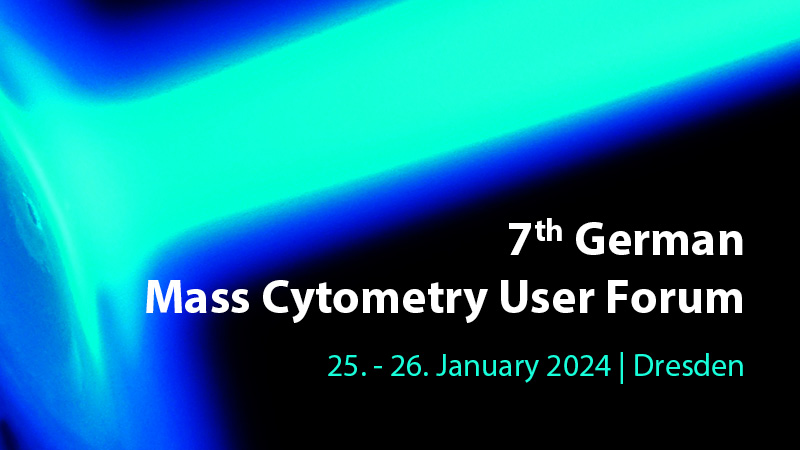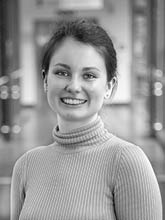Thursday, 25th of January 2024 at 4:00 pm – 5:30 pm
Chairs: Claudia Peitzsch & Sarah Warth
News from… Dresden by Sebastian Thieme & Ralf Wiedemuth

Abstract
News from… Freiburg by Henrike Salie

University Medical Center Freiburg
Imaging mass cytometry as a tool to define the spatial immunotypes of hepatocellular carcinoma
Hepatocellular carcinoma (HCC) is a heterogeneous entity with distinct subtypes described based on their molecular profiles, including immune subclasses. However, the utility of these classifications for the prediction of immunotherapy outcomes is limited. We hypothesized that the spatial organization of the immune response in the tumor microenvironment (TME) is likely to influence response and survival of HCC patients under immune checkpoint inhibitor (ICI) therapy. Thus, we applied imaging mass cytometry (IMC) to characterize the HCC TME on a spatially-resolved, high-dimensional and single cell level and to develop a classification that correlates with immunotherapy outcome.
Firstly, we applied IMC on tissue sections from a discovery cohort of 54 HCC patients. We identified several immune, stroma and tumor/hepatocyte cell clusters. Unsupervised neighborhood detection based on spatial interaction of immune cells revealed three immune neighborhoods with distinct cellular networks. The variation of the neighborhood architecture pointed to three major spatial subtypes that could be classified based on T cell infiltration and tumor compartments and that resemble conceptual features of immune-deplete, immune-excluded and immune-rich TMEs. We identified the differential contribution of distinct immune subsets between the spatial immune types. Our findings could be validated in an independent cohort of HCC patients receiving ICI based therapies and progression-free survival differed significantly between the spatial immune types.
Our study highlights the use of IMC for in-depth characterization of tissue microenvironments to facilitate biomarker discovery.
News from… Heidelberg by Felix Hartmann

German Cancer Research Center (DKFZ), Heidelberg, Germany
Multiplexed imaging of metabolic niches in human cancer
We will give an overview of the implementation of the multiplexed ion beam (MIBI) spatial imaging technology at the DKFZ site in Heidelberg, with a short update on instrument performance and usage across different groups at DKFZ. Our scientific focus lies on the quantification of metabolic interactions in human tumors. We have recently acquired multiple human sample cohorts to connect spatial metabolic niches to cancer invasiveness, survival and therapeutic response.
News from… Berlin (MPI) by Maia Pesic

Max-Planck Institute for molecular genetics, Otto Warburg Laboratory, Yaspo Lab, Gene Regulation & System Biology of Cancer
The transcriptional landscape and the immune microenvironment of the testicular niche in pediatric B-ALL
B-cell Acute Lymphoblastic Leukemia (B-ALL) is characterized by a blockage of B-cell progenitors differentiation in the bone marrow and abnormal proliferation of blast cells. Approximatively 15% of patients relapse after first line therapy, with testicular relapses being the third most common site of relapse after the bone marrow and central nervous system. Long-term event-free survival often requires surgical removal or local irradiation of the testis, greatly impacting quality of life. The underlying mechanisms behind the nesting and survival of leukemic cells in the testis remain elusive. To uncover potential targeted therapeutic avenues, we performed a multi-modal molecular analysis of a cohort of relapse pediatric B-ALL (re-ALL), exploring the specific transcriptomic landscape and immune microenvironment of testicular relapse compared to bone marrow relapses. In this project, we aim to establish for the first time a comprehensive molecular profile of testicular re-ALL. Here, we performed clustering and differential gene expression analysis on high dimensional bulk RNA-seq data generated from a cohort of 35 samples, identifying distinct gene expression signatures groups stratifying the testicular relapse group. Further, we explored the spatial context of key biomarkers in patient tissues by means of imaging mass cytometry (IMC). We developed a panel of 28 markers which enabled us to quantitatively capture the immune microenvironment composition within the leukemic niche. IMC data analysis was performed using the MICCRA pipeline developed in our group, providing a new tool for automating IMC analysis. Preliminary results suggest that M2 macrophages and several T cell subtypes (T helper, cytotoxic T cells, and regulatory T cells) are the main components of the re-ALL microenvironment, which appeared heterogenous ranging from so-called immune deserts to highly infiltrated (hot) regions featuring tertiary lymphoid organs like structures. We are currently investigating correlations between those unusual patterns with the clinical data and the cohort group profiling.
News from… Erlangen by Luis Munoz

Department of Internal Medicine 3 – Rheumatology and Immunology & Deutsches Zentrum für Immuntherapie. Friedrich-Alexander-Universität Erlangen-Nürnberg and Universitätsklinikum Erlangen, Germany.
Epithelial cell damage in the submandibular salivary gland and the development of primary Sjögren´s Syndrome
A glandular epithelial deregulation is thought to be the critical at early stages of primary Sjögren´s syndrome (PSS) development. The nature of the initial damage and the cellular mechanisms behind the trigger of autoimmunity are still unknown. The sought to evaluate the epithelial changes induced by secretory stress in submandibular salivary glands (SMG) of mice with PSS.
We induced a salivary secretory stress in mice during transient hypercalcemia with the β1-adrenergic agonist denopamine. One half of SMG was prepared for RNAseq and the second half was FFPE for further analyses by IMC. The gene expression profiles of the SMG were employed to calculate the relative abundances of various cell types with the digital cytometry tool CYBERSORTx. Sera were tested for autoantibodies against SSA1, SSB and M3R by ELISA.
Secretory stress mice caused the enlargement of lumen areas of granular convoluted tubules (GCT) and an absolute loss of epithelial GCT cells suggestive of an obstructive sialadenitis confirmed by digital cytometry of gene expression profiles. Spatial analyses revealed an increased abundance of neutrophils in the acinar areas with accumulation of neutrophil extracellular traps (NETs) in the lumen of GCT. The analysis of saliva displayed an increased viscosity which might be responsible for the obstruction and damage of the GCT cells in these mice. Serology of mice with obstructive sialadenitis after a recovery phase revealed elevated titers of autoantibodies against SSA1, SSB and M3R.
Neutrophils infiltrate SMG and NETs clog GCT during obstructive sialadenitis before the appearance PSS-related autoantibodies suggesting that neutrophils and NETs induce epithelial damage and contribute to autoimmunity.